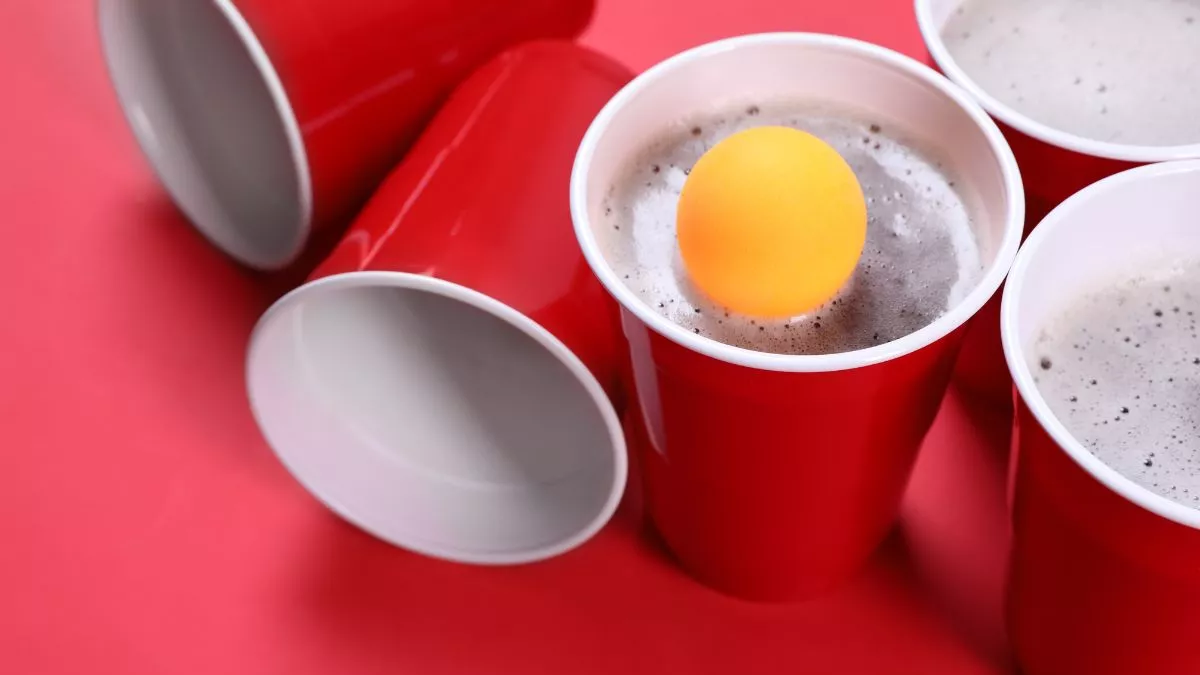
There are two main types of solo cups: Solo red cups and Solo paper cups. Red solo cups are the most popular of the two, they’re commonly used at parties and come in several different sizes.
Hot Coffee in Solo Cup?
Red Solo cups should never be used for hot coffee since they’re only meant for cold drinks. Instead, you can use the 12-once or 16-ounce Solo paper hot cups, these are more durable and contain non-melting materials.
Generally, the Solo paper cups are excellent if you love to take your morning coffee leisurely without worrying about it getting cold. The coffee stays hot for a long time in these cups.
The lids are surprisingly high quality. They are not susceptible to leaks and they are designed to keep you from accidentally slipping your hot coffee.
Why are red Solo cups bad for hot coffee?
Red Solo cups are made from non-heat-resistant and non-biodegradable plastics, which also tend to have carcinogenic properties. When you pour hot coffee into the cup, it heats up and causes the plastic to melt.
When this happens, you will notice that your coffee tastes slightly like plastic.
The components in these plastics may contain harmful chemicals that can negatively affect you when you ingest them. This is because of the additives commonly used with plastic polymers when making plastic cups.
When you pour hot coffee into the cup, the heat causes the additives to melt into your drink. As such, you should only use red Solo cups for cold or iced beverages.
Other precautions when using a red solo cup
Don’t heat them in the microwave: Red Solo cups are not as thick as microwave-safe cups, which can withstand the heat from your microwave. If you put your red solo cup in the microwave, it will get deformed and possibly melt due to the high heat.
Don’t store them in the freezer: If you are thinking about freezing your coffee in a red Solo cup, don’t! Putting these cups in the freezer can cause them to develop cracks.
Don’t keep them outside for too long: If you are planning to reuse your Solo cup, do not leave it outside. Exposure to extreme temperatures can cause the cups to become distorted.
Red Solo Cups Origins
Red Solo cups can be traced back to 1970. Styrofoam was originally used to produce the cups, but they are now made of plastic after consumers demanded a more eco-friendly product.
Solo cups are made from a type of plastic called polystyrene. It’s a pretty common plastic often used to make different packaging, drink, and food products. The term “polystyrene” is usually shortened to “PS”.
Polystyrene is referred to as a thermoplastic, meaning that it’s moldable. The quandary is that this plastic is extremely hard to recycle, which makes disposing of red Solo cups quite tricky.
If you burn them, the plastic produces a toxic gas that can be harmful to your body. You can play a small part in minimizing the waste by reusing the cups wherever possible.
Coffee temperature effects on plastic solo cups
PVC and BPA plastic are the two most commonly used materials on most plastic coffee cups. These types of plastic are prone to leaching under high temperatures.
When the base plastic material starts to leach, its harmful plastic additives are released directly into your coffee. This not only affects the taste of your beverage but can also affect your body over time. This is why it is ill-advised to put hot beverages in any plastic disposable cup.
If you need a hot drink, stick to the leak-proof, biodegradable Solo cups that can insulate heat of up to 175 degrees.
These are also environmentally friendly and allow you to play a small part in cutting back the release of non-recyclable plastic into the environment.
And as mentioned earlier, Solo cups aren’t really microwave-friendly. Even if your plastic cup can safely store hot beverages, never put it in the microwave unless the brand labels it as microwavable.
Normal cup vs red Solo cup?
1. Size
The height of the red Solo cup is 4 1/8 inches and it has a capacity of 16 fluid ounces. This means that when you pour any liquid into the cup, its volume will be deducted by approximately 35 percent to give you around 11 ounces.
2. Shape
The red solo cup has vertical ridges on one side and nothing on two sides, while a standard cup comes with just one smooth side. Another difference between the two cups is that the red solo cup is not that wide at the base.
Benefits of putting coffee in a solo cup?
1. Affordable
The best thing about solo cups is that they are pretty affordable. One solo cup goes for about a dollar, so you can buy many without worrying about your budget.
2. Durable
Solo cups are pretty durable. They are made of plastic that can withstand high pressure without coming apart while you are carrying your coffee.
3. Temperature control
Solo cups have the ability to retain heat, which helps keep your coffee hot. This is because the interior has insulation that prevents heat loss even if you are in the cold.
4. Easy to clean
Contrary to popular belief, cleaning solo cups is really easy. All you need is some soap and water to effortlessly remove stains on the plastic.
5. Multipurpose usage
You can use a solo cup with various beverages, whether it is coffee or hot chocolate.
6. Easy to carry
You can easily bring your solo cup anywhere you want. They are flexible and lightweight, so they won’t look awkward or feel cumbersome when carrying them around.
7. Perfectly sized for any beverage
Solo cups are designed to hold all sorts of beverages, whether they are hot or cold. So you can use your solo cup on the rocks, coffee, tea, water, or even soup!
8. No odor after cleaning
Washing solo cups is a breeze. What’s more, they don’t leave an unpleasant smell when you pull them out of the dishwasher.
Is it safe to put red Solo cups in a dishwasher?
Generally, yes. You can put red Solo plastic cups in the top rack safe of your dishwasher. However, you should never place solo paper cups in the dishwasher as they will likely turn into cardboard mush.
There’s no problem washing your plastic cups in the dishwasher, as long as you put them on the top rack. You can determine whether it is safe to put your plastic cups in the dishwasher by checking for a recycling code at the bottom of the cup.
- Code No. 1, PETE, or PET: You are supposed to wash these types of cups only once in the dishwasher and only in the top rack.
- Code 7, 5, or 3: These plastic cups contain BPA (Bisphenol-A). Washing them in your dishwasher may cause the BPA to leak from the cup.
If you have numerous used plastic cups in your kitchen sink, washing them can seem like a daunting task. Unfortunately, you can’t just stack them all into your dishwasher as some of them may not be dishwasher safe. Here’s what you should do:
- Look for a sign or words on the cup that say “dishwasher safe”.
- If you are unsure, hand wash them with soap and warm water.
Why is it bad to put plastic in the dishwasher?
Every plastic reacts differently to being washed in a dishwasher. When you put plastic cups in your dishwasher, the following possibilities may occur:
- Nothing. Everything goes smoothly and the cup is nicely cleaned
- Any printing on the cup fades and ultimately disappears
- The cup develops cracks, especially if it’s acrylic plastic
- The cup becomes warped or shrinks, especially if it’s a disposable cup made of cheap plastic
There’s been a lot of controversies lately surrounding plastics and BPA (Bisphenol-A), with some studies suggesting that BPA can be toxic, especially for kids.
Different types of plastics are used in the manufacture of plastic cups, so always read the label before buying a plastic cup to determine whether or not it contains BPA.
The good news is that red Solo cups do not contain BPA, so they are safe to use and wash in the dishwasher (in the top rack).
Conclusion
Red Solo cups are suitable for cold beverages while solo paper cups are designed for hot drinks such as hot tea, hot coffee, or hot water.
That said, there are also a few more considerations to bear in mind, mainly related to how plastic can affect the quality of your coffee.
